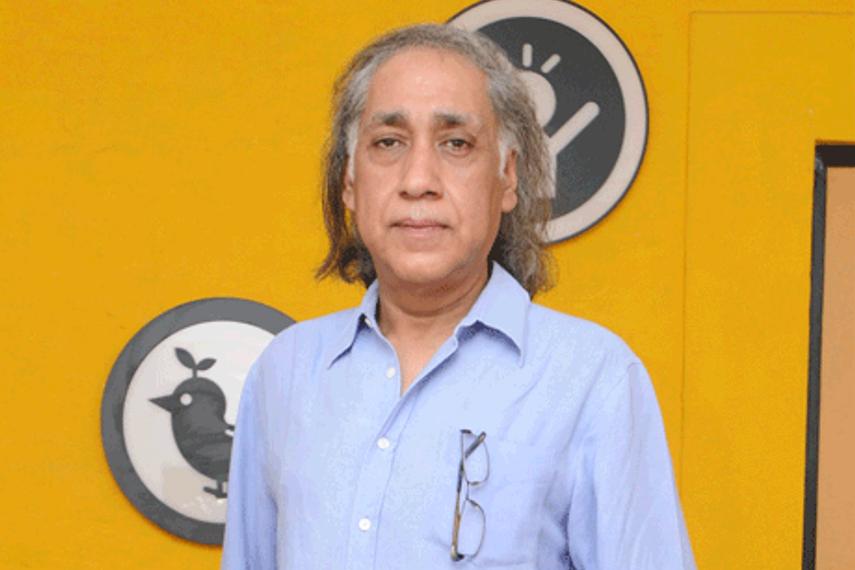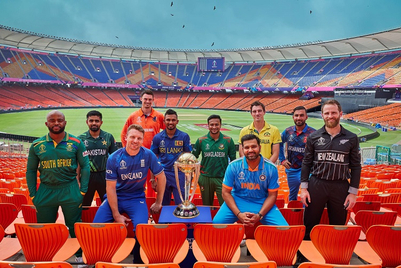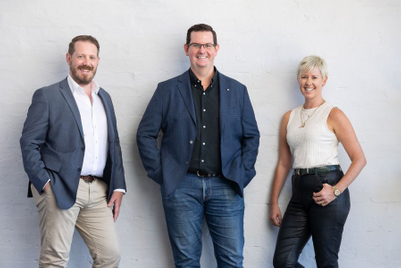
How and why did Sabyasachi Sen become Gullu Sen?
Like all good Bengalis, Gullu was the ‘daak naam’ (pet name) given to me by my parents. By the time I was six or seven years old, I realized that people in North India were probably never going to be able to pronounce ‘Sabyasachi’ correctly and thus started introducing myself as Gullu and it just stuck ever since. Only very recently, with Sabyasachi Mukherjee becoming a cult Indian designer, have people finally learnt to say my real name correctly. But Gullu is now a legal entity; my passport, bank documents, credit cards et al read as Sabyasachi Sen alias Gullu Sen.
You are a product of Delhi School of Art. Did you stumble into advertising or was it a well-planned move?
I come from a family of artists and architects, so there is surely a gene of creativity running through. I was studying applied art at the College of Art, which essentially was advertising-led art. I can safely say that I was gifted in art and according to my naïve understanding, good in art automatically meant good in advertising. So, somewhere at the back of my mind I had already chosen my career very early in life.
The first agency I contacted after graduating was Ulka - the hot shot agency of those times. While I was waiting for their offer, I went to HTA with my portfolio. The then ECD, Denis Joseph, hired me on the spot as a visualiser and thus began my sojourn in advertising. It was a huge agency and the floor where I was tucked into a small corner cubicle had 70 creative people. While I was humble enough to realize that I couldn’t work on a campaign just then, I needed to prove myself. Maurya (Welcomgroup) was a big client of HTA but no senior person wanted to be a part of it. It was a mundane day-to-day sort of print advertising campaign and I figured that that 60 cc space of print work was going to be my launch pad. The work was appreciated and I soon became a part of the team handling Nestle, Hero Group, Onida, etc.
The first year was a boot camp, but by the end of that year I became an advertising commando. I could handle any contingency or emergency. Sometimes I feel, we are too soft on the new recruits and thus, they lack the shock absorbers we old timers came to be fitted with.
Moving from a humongous HTA to a smaller, more boutique Trikaya Grey must have been a bold move. Why did you shift?
When you are young, it is fashionable to follow trends. And Trikaya Grey, with its brand of advertising, had become a sort of a cult in those days. They had an interesting strategy which was mostly press driven. The agency was creating very western work that had a niche appeal targeting mostly English speaking audiences for clients like Grindwell Norton, Sweetex and Sterling Resorts. In some ways, there brought in ‘craft’ into copy and changed the way advertising looked. While it had some creative geniuses on its rolls, possibly my mindset didn’t suit Grey’s culture. I wanted to work on mainstream brands, make films and be in the space Lintas and HTA operated in.
But instead of joining a big, network agency you opted to build Interact Vision -- Mudra’s second agency for small budget entrepreneurial clients. Wasn’t that a career suicide?
While a lot of my friends and colleagues discouraged me, I couldn’t resist the thrill of setting up an agency ground up so early in my career. Interact Vision was just the opposite of HTA and Trikaya Grey, primarily focusing on small entrepreneurs who had the funds but did not speak the same language as the large agencies. From golf-playing, Marlboro-smoking, wine-drinking CEOs with corner offices in glass front buildings listening to Bob Dylan, we were now servicing kurta-clad gentlemen trying to sell their brand of coolers or agarbattis or textiles. It was an absolute eye-opener and an experience that taught me consumer behavior and advertising in its purest form. For the first time, we stepped out of our air conditioned offices and into the markets that stretched from Surat to a small town in Punjab.
These entrepreneurs were far smarter and brighter than the professional managers as they were very savvy, street smart, knew what they were selling and had a pulse on exactly who they were selling to.
The reason why some of the greatest advertising didn’t work was because it was in English. A lot of us creative people in big advertising agencies just worried about our image and focused on creating work that received accolades within the fraternity. I doubt if any of it tugged at the heart strings of the common Indian consumer.
The four and a half years I spent at Interact Vision were the most satisfying of my career.
After the success of Interact Vision, you somewhat earned the tag of being a specialist who could set problematic offices on track. Why then did you move to Rediffusion DY&R?
Revamping Rediffusion DY&R was as good as setting up a new agency. It was in a fairly bad shape. They hardly had any existing accounts, were not pitching for anything much and network (Y&R) clients were staying away as they didn’t have much confidence in the capabilities of Rediffusion Delhi. They had a huge employee roster and were losing money in rupee terms.
When at Interact Vision, we had pitched for an account, of which Rediffusion was the incumbent. They lost the pitch but took notice of us and we (Sandeep Goyal and I) were brought in as ‘new business development’ managers. We landed running and within the first three months bagged 15 new accounts including Airtel, Casio and seven brands of Suzuki. We became the most dreaded agency at the pitches as we almost had a 100 per cent win record.
Three months later, Mr Nanda promoted us to look after the branch and consolidate the acquisitions. Thus began nine very fruitful, enjoyable yet challenging years at Rediff.
In the early ‘90s, starting at Rediffusion DY&R, the Sen-(Sandeep) Goyal team became a brand to reckon with. Where did the association begin and how was it nurtured? Any work from that association that you are particularly proud of? Where do you two stand today?
Our association goes back to our stint at HTA where he had joined as an account executive from Goodlass Nerolac. We looked out for each other in our initial days, worked on some exciting campaigns and soon evolved into an unholy team of creative and servicing. The true recognition, however, came at Rediffusion DY&R where we became pitch masters. We did some incredible work together, especially for the launch of what is now called the Airtel brand – from its genesis, foundation, logo design and all associated communications were designed by us. It may be a fairly stable brand today but when it was launched the market was virulent and very price-sensitive.
The challenge cemented our bond further and we went on to start Dentsu together.
However, today we have moved on and are not really in touch. Both of us exist in different spaces and probably have different priorities.
You were a part of the start-up team at Dentsu Communications and then went on to spend close to eight years at the agency. How different was that experience?
I was more than just being a part of the start up team at Dentsu. It literally started from my backyard. While Dentsu Inc had liaison offices in Delhi and Bangalore, the actual work was being done by back end agencies such as Orchard and Everest. When we got into a JV arrangement (Mogae and Dentsu), we were expected to turn it into a full service agency overnight. While the agency had Honda and Toyota as network clients, we decided to go beyond Japanese businesses. We were hiring, pitching and setting up operations at the same time - heady times, those.
The main challenge we faced at Dentsu was to create awareness about the agency. Funnily, while most middle-to-senior management professionals were aware of Western agencies, Dentsu was considered to be an in-house agency for Japanese brands, akin to an Innocean.
The ball truly started rolling within two years of our coming into existence. Besides servicing Toyota and Honda, we aggressively worked towards gaining business out of Suzuki; bagged some big local and global clients and didn’t really ever look back.
Why did you quit Dentsu?
It is the story of my life that when something reaches a certain point in time (and size), I start to get fidgety. One, the work at the agency had become mechanical and I was spending most of my time collecting bills and solving administrative problems. Very rarely was I using my creative abilities. Two, besides the frilly words, the truth is that when management changes, everything else also needs to change.
We (Rajesh Aggarwal, ex president Dentsu India and I) were also on the wrong side of age. With both of us approaching 50 soon, it was a now or never decision to start on our own.
Any thoughts on the recent Taproot acquisition?
It is a good acquisition if Dentsu can make it work. Aggie and Paddy are brilliant guys – I just hope that the agency manages to use their resources well.
So ‘From here on’… what?
‘From here on’ is my last frontier in advertising. It will be art and music and movies after this.
The agency was floated by us due to a simple need of being our own creative bosses. I no longer wanted to be in a situation where I spend 80 per cent my time stroking egos and pleasing someone. Being accountable to your client is different but being answerable to a Japanese board can be quite tiring.
We, now, are a lean agency which has the capability to turn around a campaign much faster than a big agency actually can. All of us actually work with our own hands.
You have done close to 300 campaigns in your career. Which, according to you, have been the most creatively satisfying and then, which have been the most effective?
I do not separate the two. My satisfaction comes from a campaign that works. Creativity in isolation does not work. The number churner and category defining campaigns are: Maruti Gypsy’s ‘No matter where you go, you find a Maruti service station’; Toyota Innova launch campign featuring Aamir Khan; HDFC’s ‘Sar Utha Ke Jiyo’; Colgate’s ‘Mera Colgate’ campaign and the Airtel campaign with A R Rahman’s signature tune.
If not advertising ….
I would have been a painter.
Maruti Suzuki Network Film ( Ladakh-Kancha film) It captured, in one single idea, the immense support structure and service abilities of Maruti Suzuki network across the country (relevant even today). The creative leap in the script made the otherwise boring fact of numbers into a charming one. While it cut across all target segments to drive home the point, it also managed to bring a smile on all lips.
Chor Bizarre London Menu design This was a fun project. Each of the illustrations I did was in old etching style. Full of trivia and illustrations it is an interesting menu to pass your time while waiting for your food.
HDFC Standard Life Insurance Film. ( Sar Uthake Jiyo) The brief was to launch and establish HDFC Standard Life, a late entrant, as a serious player in the insurance category. My inspiration for the script came from my own father based on The insight that insurance meant financial independence in old age. For most people living with their ‘khuddari’ and self respect intact is more important than fear of death.
BPL QPF technology Film Thanks to the client who simply said, “Give me a mega international entertaining film for my TV sets with QPF technology without going into specifics,” this is one film I enjoyed most writing, story-boarding and shooting. The fun we had spilled on the canvas and it beautifully achieved the purpose of creating a platform of QPF technology platform for BPL TV sets.
Sony Ericsson w700i (Metro station} Film The task was to sell a certain numbers of w700i phones in a very short period of time. Highlighting the ‘walkman’ feature of the Sony phone, we created an immediate differentiation. The commercial showcased Indian street musicians in a foreign metro train. Every phone in the inventory got sold.
Toyota Innova-1 Film (Versatile) with six Aamir Khans The brief was to position Toyota Innova as a versatile car in the passenger car segment. The barrier was its shape and size. Six blockbuster Aamir Khan's characters in one Innova said it all without using the word versatile. A 100-second version was released first on CNBC’s auto show with a making of the ad along with it. It cut through the clutter effectively.
Logo design for Studio Beat Route for digital medium and print I designed this logo for the sound studio of my dear friend Sushmit Sen of Indian Ocean. I used the mike to turn it in to a singing face. Quirky but interesting.
Whyte & McKay Special Reserve Film This was a time when India sold more scotch whiskies than produced in Scotland. I translated the unique double matured, double smooth proposition visually by reversing the whole film backwards from the middle.
Toyota Innova-2 Film (Everyday. Many roles. One car) with Aamir Khan Taking the launch idea of the first campaign forward, the task was to demonstrate the versatility of the car it was designed for. In this film Aamir played the role of a common man doing regular things we all do. This commercial was extremely successful in establishing a connect with the consumers.
Whyte & McKay Findlaters To create a campaign for a popular scotch whisky without any special attributes, we used the Royal Scottish Orchestra Group in Scotland and focused on the guy who play the bells and triangles intermittently while sipping on his whisky rest of the time. It effectively
re-inforced the tag-line, “Leave the rest for later.”




.jpg&h=334&w=500&q=100&v=20250320&c=1)
.jpg&h=334&w=500&q=100&v=20250320&c=1)



.jpg&h=334&w=500&q=100&v=20250320&c=1)
.jpg&h=334&w=500&q=100&v=20250320&c=1)


.jpg&h=334&w=500&q=100&v=20250320&c=1)



.jpg&h=268&w=401&q=100&v=20250320&c=1)
.jpg&h=268&w=401&q=100&v=20250320&c=1)

.jpg&h=268&w=401&q=100&v=20250320&c=1)

